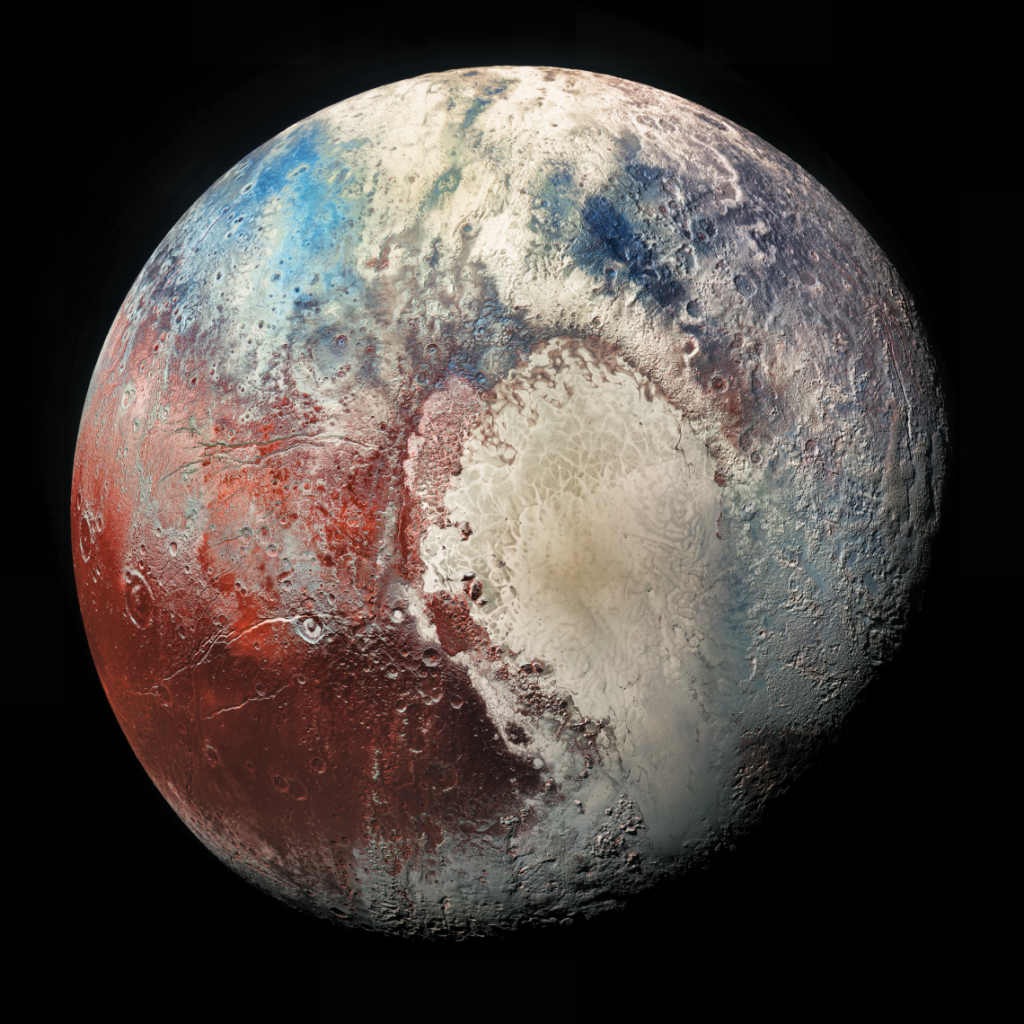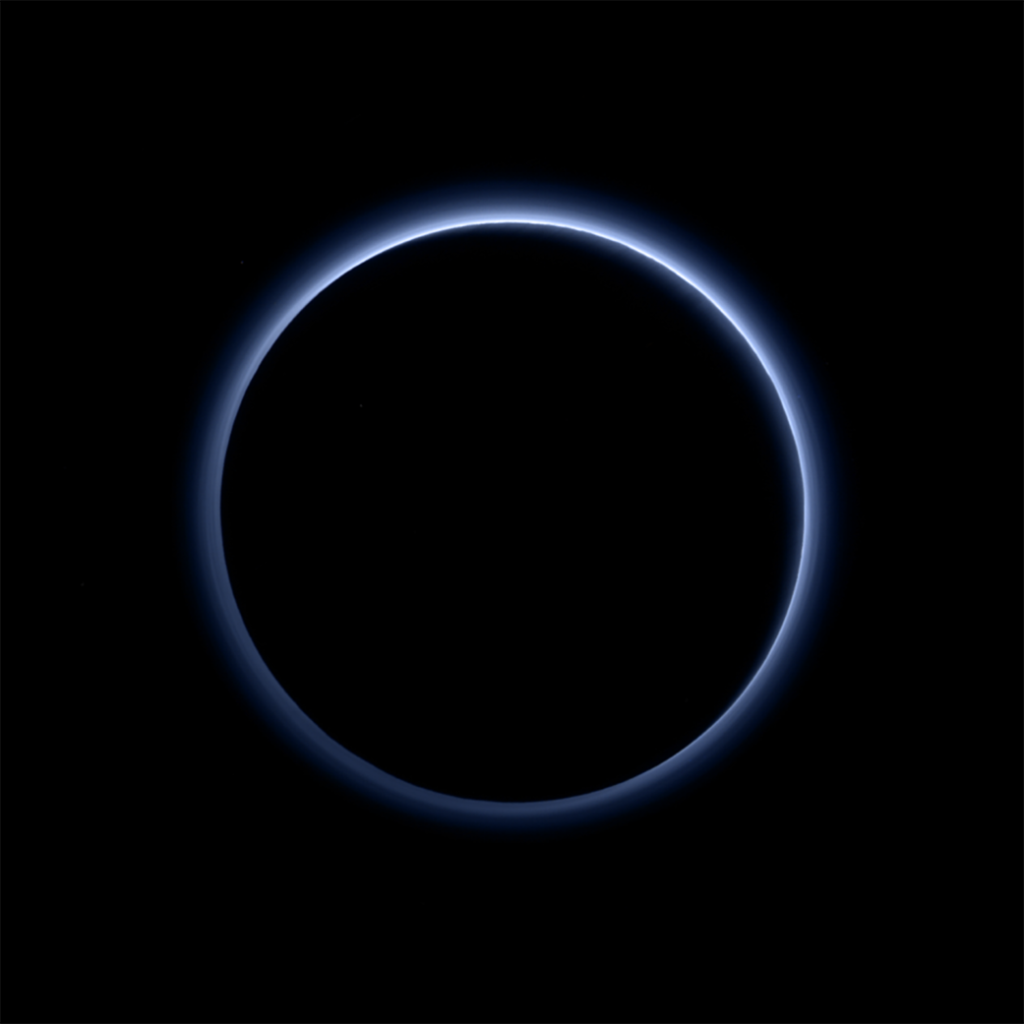Key Takeaways
- Pluto’s Demotion: Pluto, once considered the ninth planet, was reclassified as a dwarf planet in 2006 due to new criteria set by the International Astronomical Union (IAU).
- Kuiper Belt Dweller: Pluto resides in the Kuiper Belt, a region beyond Neptune containing icy bodies and comets, offering insights into the outer solar system.
- Discovery and Naming: Astronomer Clyde Tombaugh discovered Pluto in 1930, fulfilling Percival Lowell’s predictions. Its name was suggested by an 11-year-old girl, honoring the Roman god of the underworld.
- Why It’s Not a Planet: Pluto’s reclassification hinged on the IAU’s criteria: orbiting the sun, spherical shape, and orbital clearance. Pluto meets the first two but not the last, as its moon Charon shares its orbit.
- Complex Surface and Atmosphere: Pluto’s surface features nitrogen, methane, and carbon monoxide ices, while its atmosphere holds haze particles and volatile ices that create a reddish-gray “snow.”
- New Horizons Exploration: NASA’s New Horizons mission in 2015 provided detailed insights into Pluto, including its size, surface features, mountains, and heart-shaped region.
- Moons and Relationships: Pluto’s largest moon, Charon, orbits in a unique double dwarf planet system, with additional moons Nix, Hydra, Kerberos, and Styx discovered later.
Pluto, once hailed as the ninth planet, has fascinated scientists and the public alike since its discovery in 1930. Nestled within the Kuiper Belt, a zone beyond Neptune, this enigmatic dwarf planet is a testament to the vast complexities of our solar system. A notable figure in Pluto’s history is Clyde Tombaugh, the astronomer who confirmed its existence based on earlier predictions by Percival Lowell. However, Pluto’s journey from planet to dwarf planet has been a subject of controversy, precipitated by the International Astronomical Union’s (IAU) refined definition of a planet.
New Horizons, a NASA spacecraft, made a groundbreaking encounter with Pluto in 2015, revolutionizing our understanding of this distant world. The probe revealed a diverse landscape, showcasing towering mountains, frozen plains, and intriguing ice formations. The heart-shaped region, aptly named Tombaugh Regio, drew particular attention, boasting an intricate interplay of different surface materials. Pluto’s moons, including Charon, Nix, Hydra, Kerberos, and Styx, further enrich its narrative, presenting a complex gravitational dance and varied terrains.
Pluto’s atmosphere, composed of nitrogen, methane, and carbon monoxide, adds to its mystique. Hazy particles scatter blue light, casting an otherworldly glow. The frigid surface, with temperatures plummeting to unimaginable lows, offers a unique canvas for studying planetary dynamics. While questions persist about Pluto’s subsurface ocean and its potential to support life, its intricate features and captivating characteristics continue to intrigue astronomers and the curious minds of Earth.
Read full article on Space.com
#1

The initial photograph of Pluto released by Nasa. Photograph: Nasa/Press Association
#2

In this image of Pluto taken by NASA’s New Horizons spacecraft, different colors represent different compositions of surface ices, revealing a surprisingly active body.(Image: NASA/Johns Hopkins University Applied Physics Laboratory/Southwest Research Institute)
#3

Pluto’s image taken by New Horizons on July 14, 2015, from a range of 22,025 miles (35,445 kilometers). The striking features on Pluto are clearly visible, including the bright expanse of Pluto’s icy, nitrogen-and-methane rich “heart,” Sputnik Planitia. NASA/Johns Hopkins University Applied Physics Laboratory/Southwest Research Institute/Alex Parker
#4

Pluto’s haze layer shows its blue color in this picture taken by the New Horizons Ralph/Multispectral Visible Imaging Camera (MVIC). The high-altitude haze is thought to be similar in nature to that seen at Saturn’s moon Titan. The source of both hazes likely involves sunlight-initiated chemical reactions of nitrogen and methane, leading to relatively small, soot-like particles (called tholins) that grow as they settle toward the surface. This image was generated by software that combines information from blue, red and near-infrared images to replicate the color a human eye would perceive as closely as possible. Image Credit: NASA/JHUAPL/SwRI
#5

Pluto’s Big Moon Charon
#6

Images of Pluto revealed ice volcanoes, hinting at the possibility of life. The images were captured by NASA’s New Horizons mission in July, 2015, when the spacecraft did a flyby around Pluto and it’s moons. The images are still being interpreted by scientist. A new photo analysis was published this Tuesday, March 29, on Nature Communications. NASA/Johns Hopkins University


